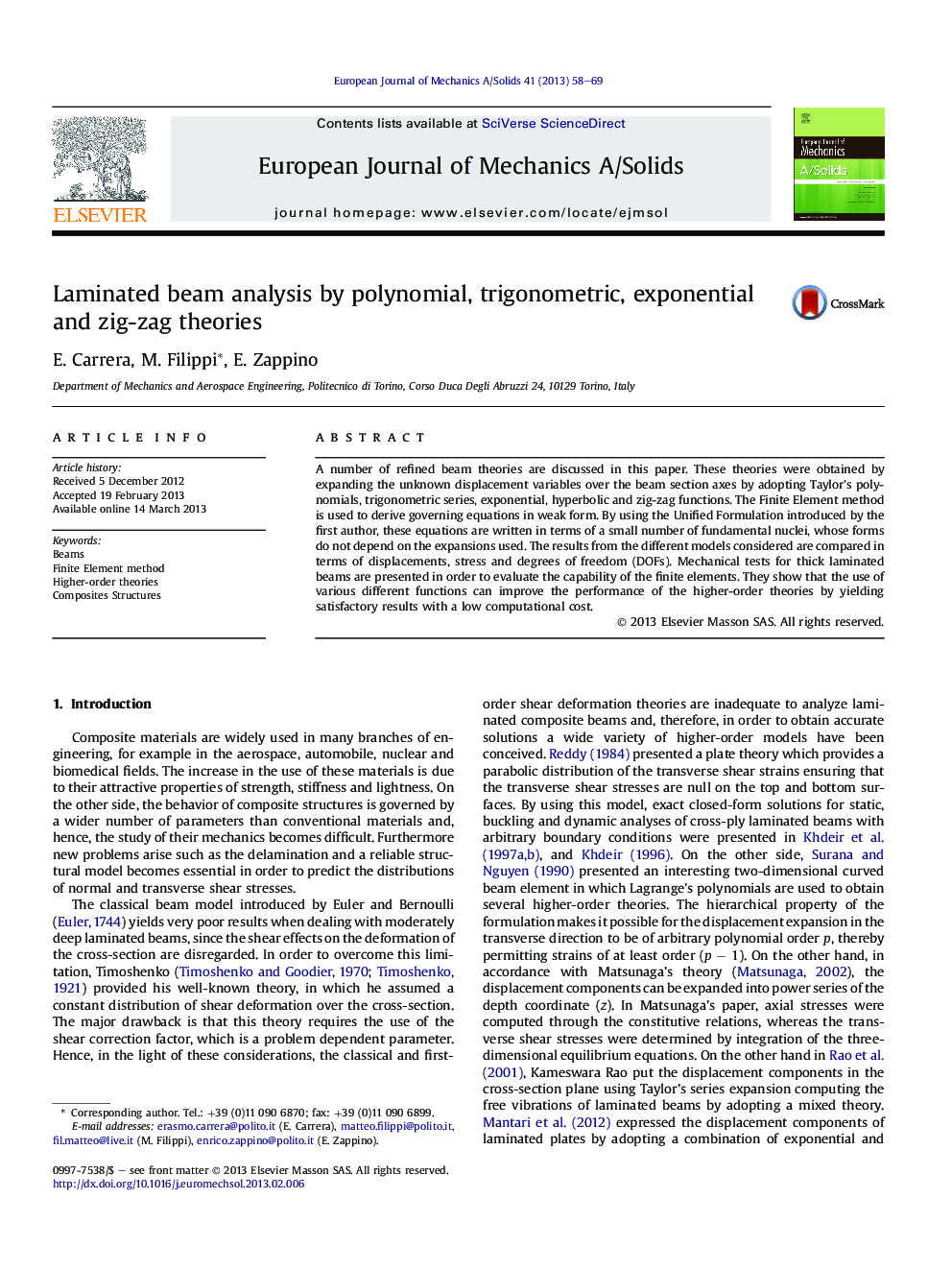| Article ID | Journal | Published Year | Pages | File Type |
|---|---|---|---|---|
| 774119 | European Journal of Mechanics - A/Solids | 2013 | 12 Pages |
•Carrera Unified Formulation permits us to deal with any-order of beam theories with no need for ‘ad hoc’ formulations.•The CUF frameworks allow us to consider generic functions in displacement field.•A variety of new expansions have been considered: trigonometric, exponential, hyperbolic and miscellaneous functions.•Zig-Zag theories have been used in the frameworks of the Carrea Unified Formulation in the composite structures analysis.
A number of refined beam theories are discussed in this paper. These theories were obtained by expanding the unknown displacement variables over the beam section axes by adopting Taylor's polynomials, trigonometric series, exponential, hyperbolic and zig-zag functions. The Finite Element method is used to derive governing equations in weak form. By using the Unified Formulation introduced by the first author, these equations are written in terms of a small number of fundamental nuclei, whose forms do not depend on the expansions used. The results from the different models considered are compared in terms of displacements, stress and degrees of freedom (DOFs). Mechanical tests for thick laminated beams are presented in order to evaluate the capability of the finite elements. They show that the use of various different functions can improve the performance of the higher-order theories by yielding satisfactory results with a low computational cost.
